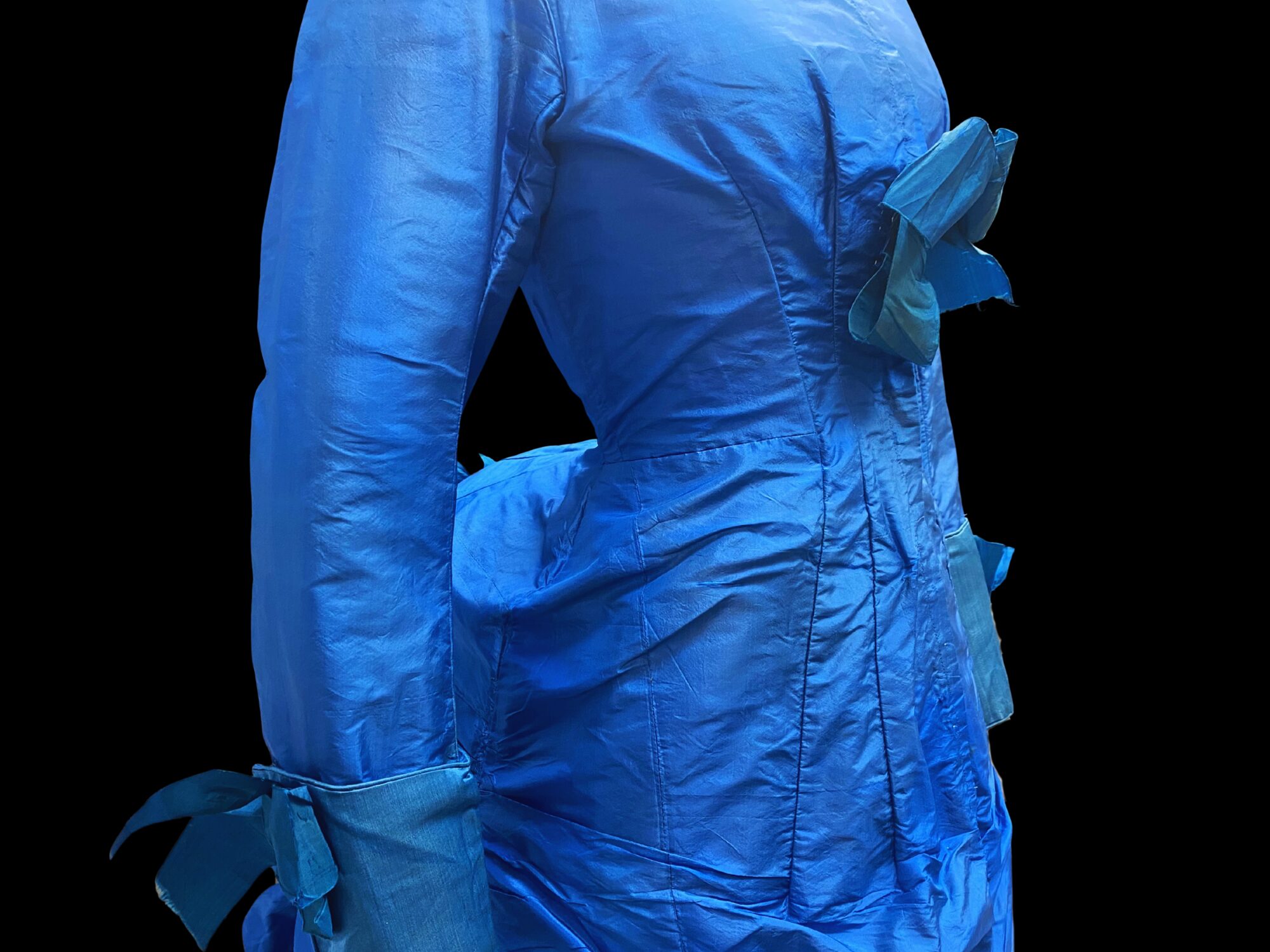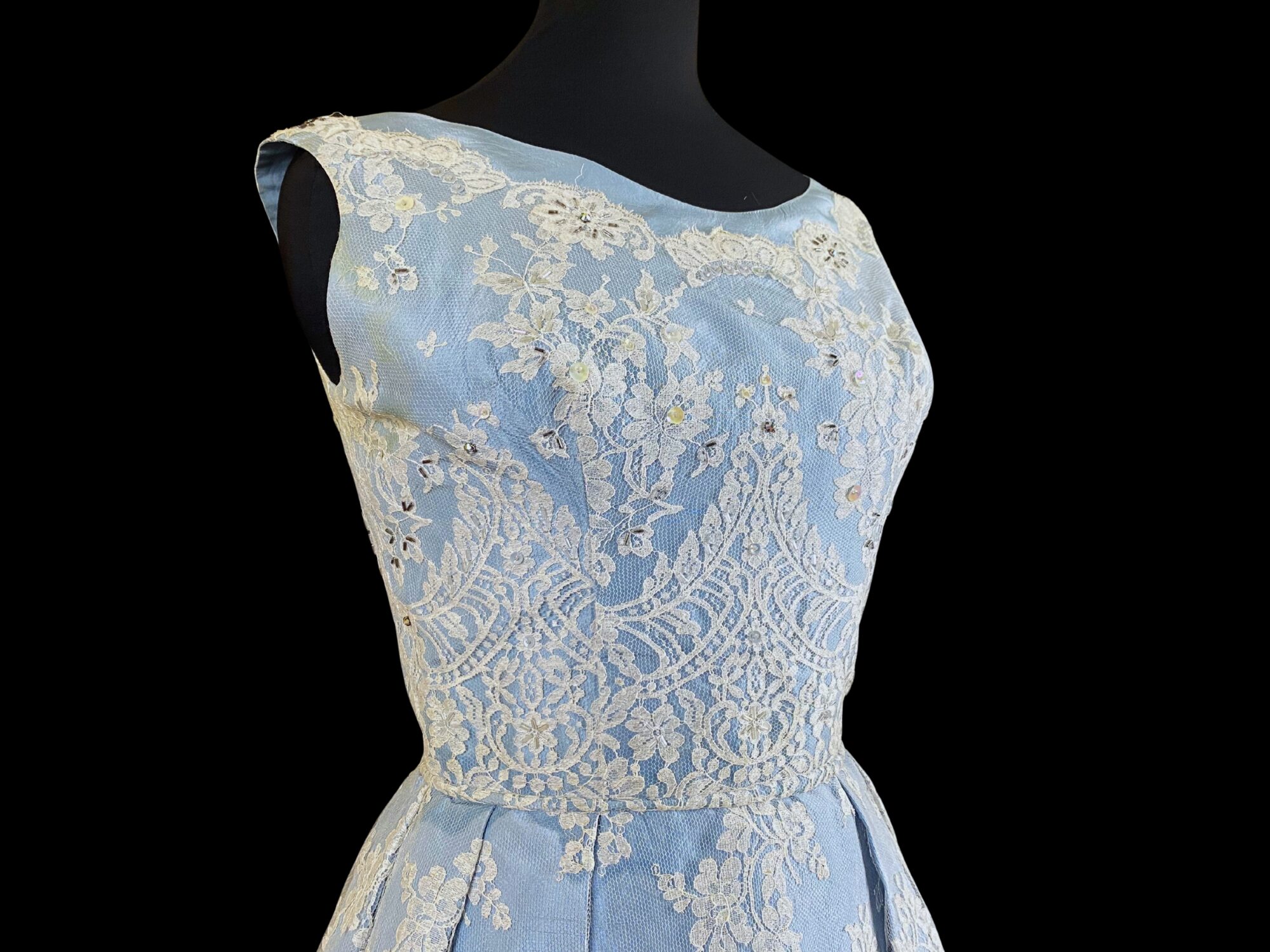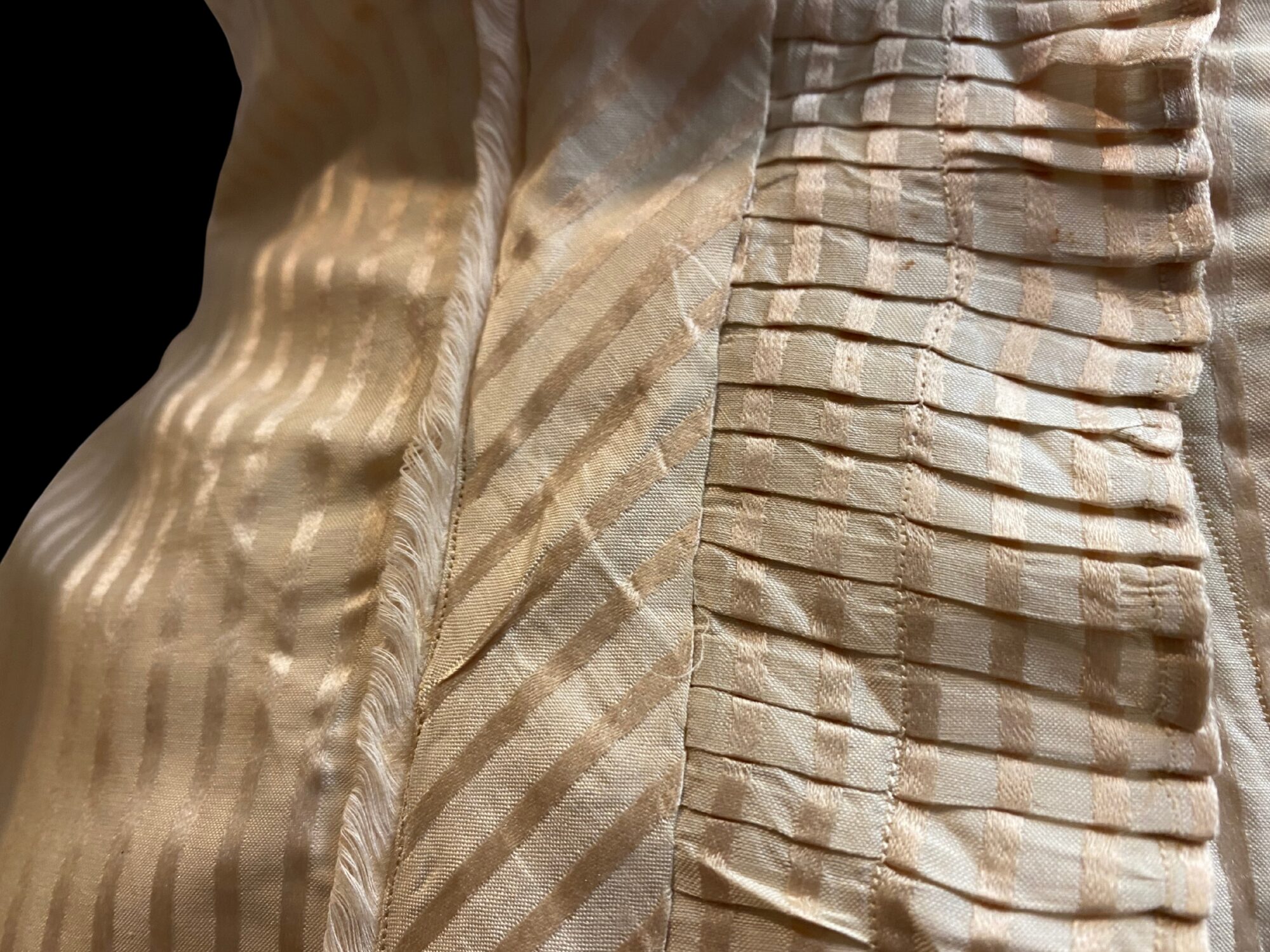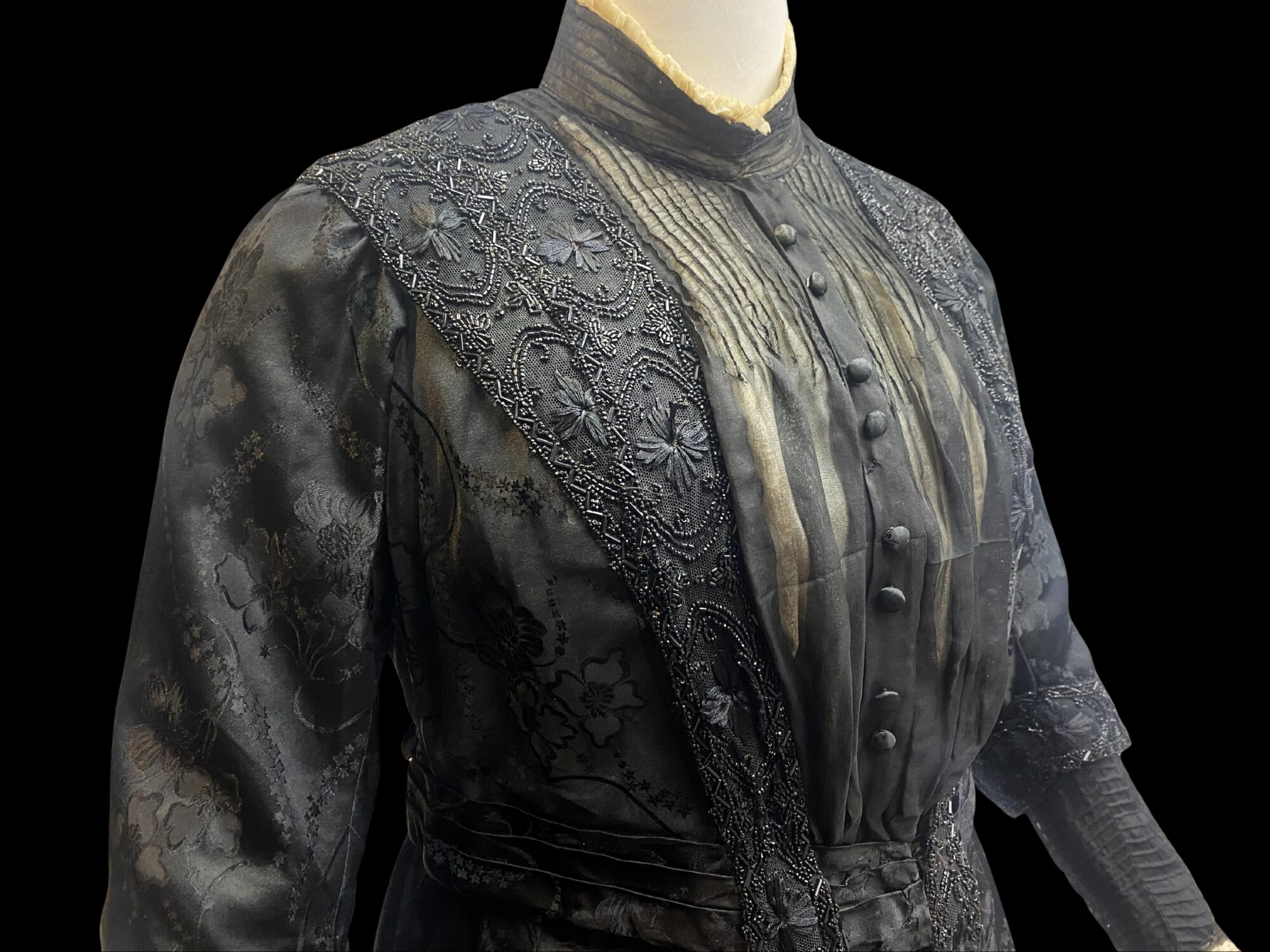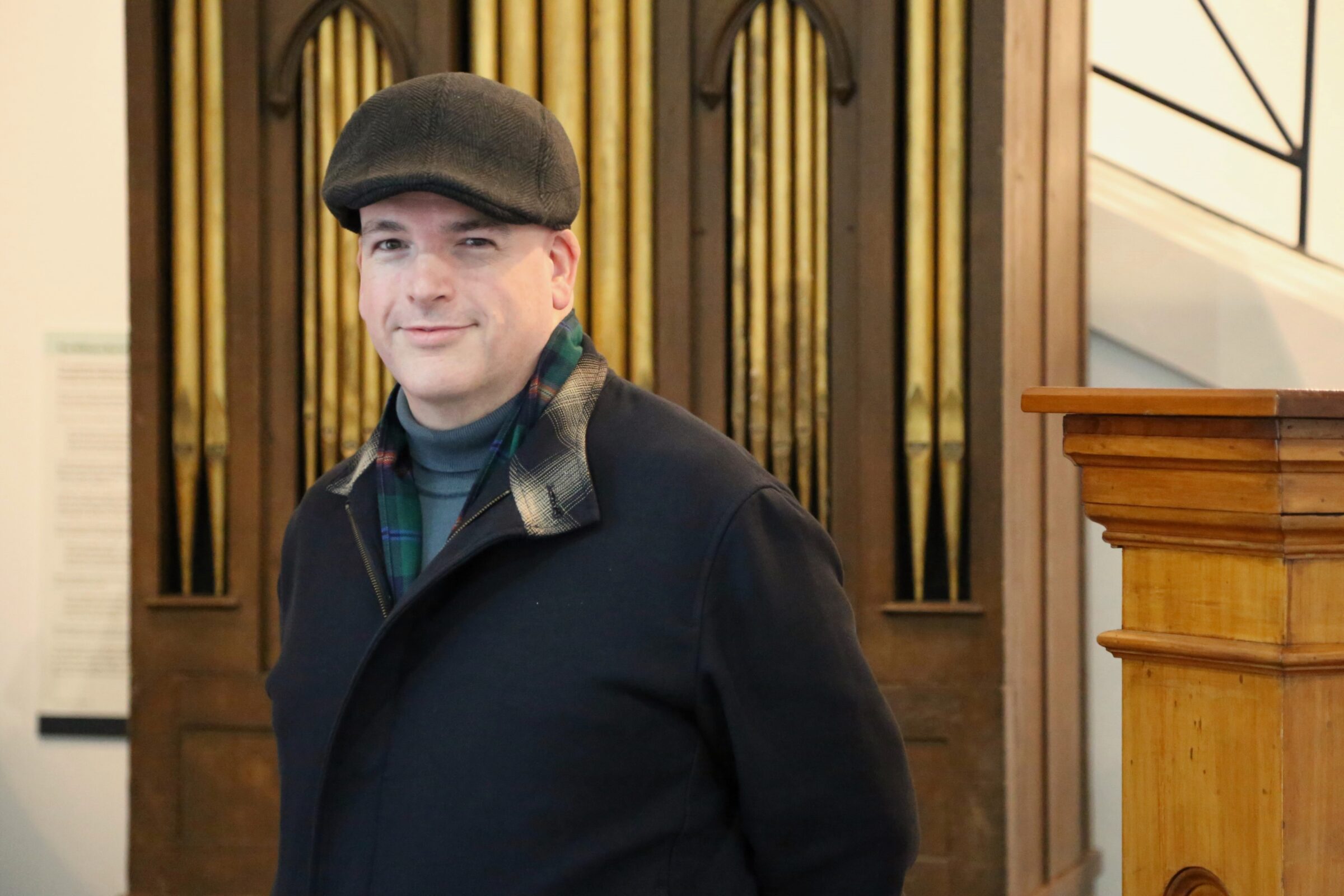Collection Stories
This outfit is an elegant, watered silk faille costume, consisting of skirt and jacket, which dates from the mid to late 1860s. The costume follows the stylistic trends of that time, which put an emphasis on the volume of the skirt while rigid corsetry compressed and shaped the bodice.
The time of this outfit was the height of popularity for the caged crinoline. Invented in 1856, a crinoline, or hooped skirt, was an undergarment that eliminated the need for multiple heavy petticoats to achieve a fashionable wide skirt. Crinoline-enhanced skirts would often measure three to four and a half meters in circumference allowing the wearer a lot of personal space as they moved around. However, there was a downside, the English Woman’s Domestic Magazine of 1867 reported that 3,000 women were burned to death annually as their wide skirts brushed against fireplaces, and another 20,000 injured because their crinoline impeded their movement. By the end of the decade the crinoline had gone out of fashion and the bustle was the new rage.
This outfit was worn by Louisa Maria Ross who was born in 1844 in Wellington. It is likely to be the outfit she wore when she married Henry Nevison Harrison on 23 January 1867 at Christ Church, Whanganui. The couple were married by the Reverend H. Nicholl and assisted by Rev Richard Taylor.
Louisa was the youngest daughter of Hugh Ross and Anna Maria Boteler Wood. Hugh Ross (1797 –1869) was a solicitor who had immigrated from England to Tasmania in December 1822. Ross had a distinguished legal career as Crown Solicitor but was in financial difficulties in 1840. He found it necessary to ‘borrow’ from his employer. Hoping to find more profitable work in Port Phillip he asked for leave, and when refused left anyway.
Six days after his departure the extent of his borrowing was realised. Warrants were issued for his arrest. He was eventually found in Western Australia after which he was brought back to Hobart in custody. He was committed for trial on 8 March 1842, charged with embezzlement of £2,021 belonging to the Crown. His lawyer shattered the prosecution’s case on a legal point and won a verdict of not guilty. Ross then free, sailed with one son for Sydney then New Zealand where he quickly set up as a lawyer in Lambton Quay, Wellington. His wife and family followed.
In the early 1850s Ross retired from his legal practice and settled at Cokely on the Rangitikei River where Louisa grew up without her mother who had died in 1853.
Henry Harrison and Louisa had a farm on Warrengate Road, Fordell, where they bred horses. Henry was a Steward for, and in later life Patron of, the Whanganui Jockey Club. Together Henry and Louisa had nine children between 1868 and 1884. Louisa Harrison died at aged 41 on 26 December 1885. In 1957, their daughter Miss Meta Harrison bequeathed this outfit to the Whanganui Regional Museum.
By Trish Nugent-Lyne, Kaihāpai Taonga/Collections & Curatorial Lead at Whanganui Regional Museum.
Image: Gown donated by Meta Harrison dating from circa 1866
Photographed by Kathy Greensides
WRM 1957.63.2
View the full-length image.


